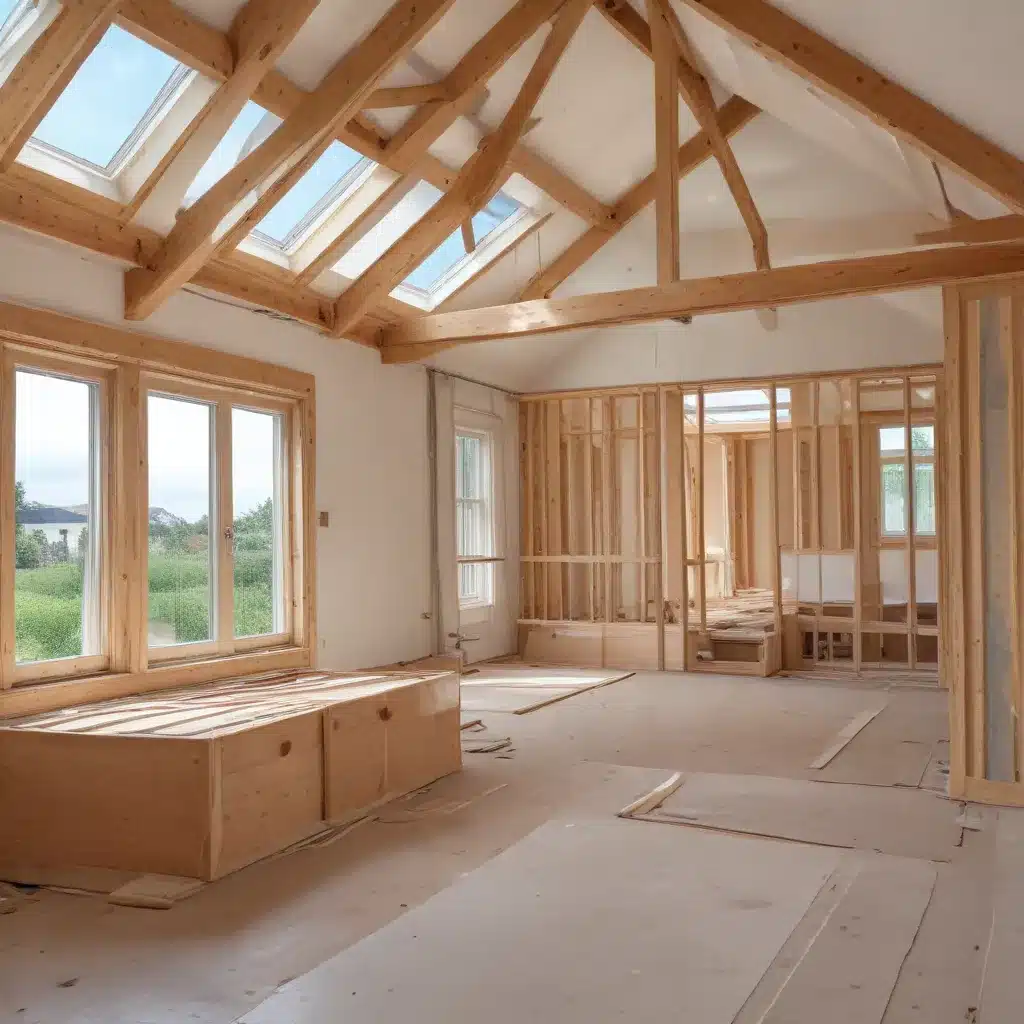As an experienced home improvement consultant, I understand the growing demand for eco-friendly renovations that not only enhance the aesthetic appeal of a home but also prioritize energy efficiency. Whether you’re a reluctant renovator seeking to make your space more sustainable or a homeowner determined to reduce your environmental footprint, prioritizing energy efficiency is a crucial aspect of any successful renovation project.
Benefits of Prioritizing Energy Efficiency
Investing in energy-efficient upgrades during your home renovation can provide a multitude of benefits that extend far beyond the immediate aesthetic improvements. Let’s explore some of the key advantages of making energy efficiency a top priority.
Reduced Energy Costs
One of the most tangible benefits of prioritizing energy efficiency is the potential for significant long-term savings on your utility bills. By incorporating measures such as improved insulation, energy-efficient appliances, and renewable energy sources, you can dramatically reduce your home’s energy consumption and enjoy lower monthly costs for electricity, heating, and cooling. These savings can quickly offset the initial investment in eco-friendly renovations, making your home more financially sustainable in the long run.
Increased Home Comfort
Enhancing the energy efficiency of your home can also lead to a noticeable improvement in overall comfort. Properly insulated walls, windows, and roofing help maintain a more consistent indoor temperature, reducing the need for constant adjustments to your heating and cooling systems. This can result in a more comfortable living environment, especially during extreme weather conditions, and can contribute to your family’s overall well-being.
Environmental Impact Mitigation
Perhaps one of the most significant benefits of prioritizing energy efficiency in your renovation is the positive impact it can have on the environment. By reducing your home’s energy consumption and reliance on fossil fuels, you can significantly lower your carbon footprint and contribute to the broader effort to combat climate change. This not only benefits the planet but also sets a positive example for your family and community, inspiring others to follow suit in their own home improvement projects.
Identifying Energy-Efficient Upgrades
When planning your sustainable renovation, it’s essential to identify the areas where energy-efficient upgrades can have the greatest impact. Here are some key elements to consider:
Insulation and Weatherproofing
Improving the insulation and weatherproofing of your home is one of the most effective ways to enhance energy efficiency. Upgrading the insulation in your walls, attic, and foundation can significantly reduce heat transfer, leading to lower heating and cooling costs. Additionally, addressing air leaks and ensuring proper weatherstripping around doors and windows can further improve your home’s thermal performance.
Efficient Heating and Cooling Systems
Replacing older, less efficient heating, ventilation, and air conditioning (HVAC) systems with high-efficiency models can have a significant impact on your energy consumption. Consider heat pumps, tankless water heaters, and smart thermostats that can optimize temperature control and minimize energy waste.
Renewable Energy Integration
Incorporating renewable energy sources, such as solar panels, into your renovation project can further reduce your reliance on the grid and lower your carbon footprint. While the initial investment may be higher, the long-term energy savings and potential for government incentives can make this a worthwhile consideration.
Financing Sustainable Renovations
Understandably, the cost of eco-friendly renovations may be a concern for some homeowners. However, there are several strategies and financing options available to make sustainable home improvements more accessible.
Government Incentives and Rebates
Many local, state, and federal governments offer incentives, tax credits, and rebates for homeowners who invest in energy-efficient upgrades. These can include programs that cover a portion of the cost for items like solar panel installation, insulation upgrades, and high-efficiency HVAC systems. Researching and taking advantage of these financial incentives can significantly offset the initial investment.
Budgeting for Long-Term Savings
While the upfront costs of sustainable renovations may be higher, it’s essential to consider the long-term energy savings and increased home value. By carefully budgeting and factoring in the projected utility bill reductions, you can make a compelling case for the financial viability of your eco-friendly renovation project.
Loan Options for Green Upgrades
Specialized green financing options, such as energy-efficient mortgages and home equity loans, are available to help homeowners fund their sustainable renovation projects. These loan products often offer favorable terms and interest rates, making the transition to a more energy-efficient home more accessible.
Incorporating Sustainable Design Principles
Beyond energy-efficient upgrades, there are various sustainable design principles that can be integrated into your renovation project to further enhance its eco-friendly credentials.
Passive Solar Design Strategies
Incorporating passive solar design elements, such as strategic window placement, thermal mass, and shading devices, can significantly reduce your home’s energy demands for heating and cooling. By harnessing the power of the sun, you can create a more comfortable and energy-efficient living environment.
Water Conservation Techniques
Implementing water-saving measures, like low-flow plumbing fixtures, rainwater harvesting systems, and drought-tolerant landscaping, can dramatically reduce your home’s water consumption and contribute to a more sustainable lifestyle.
Eco-Friendly Material Selection
Carefully choosing sustainable, low-impact materials for your renovation, such as reclaimed wood, bamboo, or recycled glass, can further reduce the environmental footprint of your project. These materials not only offer unique aesthetic appeal but also support the circular economy by minimizing waste and resource depletion.
By prioritizing energy efficiency and incorporating sustainable design principles, you can transform your home into a more comfortable, eco-friendly, and financially responsible living space. While the initial investment may be higher, the long-term benefits, including reduced utility bills, increased home value, and a smaller environmental impact, make sustainable renovations a wise choice for the reluctant renovator.
To learn more about sustainable home improvements and connect with experienced contractors who can help you achieve your energy-efficient goals, visit Reluctant Renovator. Their team of experts can guide you through the process, ensuring your renovation project is not only beautiful but also environmentally responsible.




